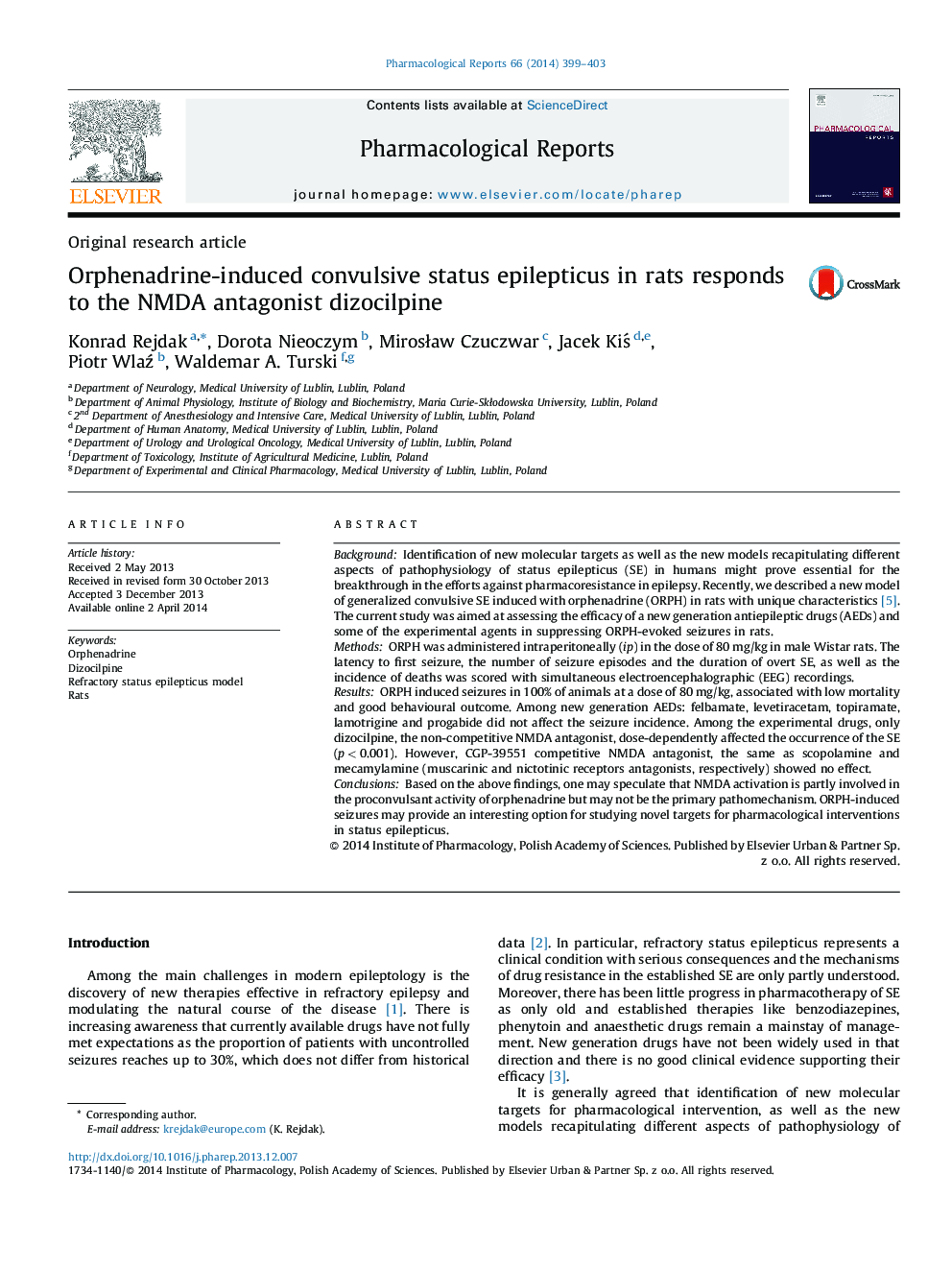| Article ID | Journal | Published Year | Pages | File Type |
|---|---|---|---|---|
| 2012190 | Pharmacological Reports | 2014 | 5 Pages |
BackgroundIdentification of new molecular targets as well as the new models recapitulating different aspects of pathophysiology of status epilepticus (SE) in humans might prove essential for the breakthrough in the efforts against pharmacoresistance in epilepsy. Recently, we described a new model of generalized convulsive SE induced with orphenadrine (ORPH) in rats with unique characteristics [5]. The current study was aimed at assessing the efficacy of a new generation antiepileptic drugs (AEDs) and some of the experimental agents in suppressing ORPH-evoked seizures in rats.MethodsORPH was administered intraperitoneally (ip) in the dose of 80 mg/kg in male Wistar rats. The latency to first seizure, the number of seizure episodes and the duration of overt SE, as well as the incidence of deaths was scored with simultaneous electroencephalographic (EEG) recordings.ResultsORPH induced seizures in 100% of animals at a dose of 80 mg/kg, associated with low mortality and good behavioural outcome. Among new generation AEDs: felbamate, levetiracetam, topiramate, lamotrigine and progabide did not affect the seizure incidence. Among the experimental drugs, only dizocilpine, the non-competitive NMDA antagonist, dose-dependently affected the occurrence of the SE (p < 0.001). However, CGP-39551 competitive NMDA antagonist, the same as scopolamine and mecamylamine (muscarinic and nictotinic receptors antagonists, respectively) showed no effect.ConclusionsBased on the above findings, one may speculate that NMDA activation is partly involved in the proconvulsant activity of orphenadrine but may not be the primary pathomechanism. ORPH-induced seizures may provide an interesting option for studying novel targets for pharmacological interventions in status epilepticus.
